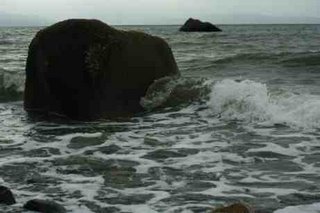arrest of my friend GERARDO BONILLA in OAXACAfrom a press release:
ARREST OF GERARDO BONILLA IN OAXACA SPARKS PROTEST OF AUSTIN ARTISTS, STUDENTS, AND ACTIVISTS
Gerardo Bonilla, painter and friend of many in the Austin artistic, activist, and student communities, was one of 149 arrested this past Saturday in a federal police sweep of Oaxaca city that is increasingly targeting the impoverished southern states workers, artists, writers, and innocent bystanders. He is an accomplished muralist and regularly facilitates and promotes children art workshops in different communities throughout the state of Oaxaca. (See for a
photo of Bonilla with his work).
The Mexican army and police forces have arrested and tortured hundreds of innocent protesters. Gerardo¹s detention symbolizes the Mexicangovernment¹s all-out attack on local democracy,².The current situation has long roots. On May 22, seventy thousand teachers started a camp out in the main square of the city to ask for an increase in their tiny salaries. This camp out follows a nearly yearly ritual, and each year it bore some meagre fruit. But on June 14, governor Ulises Ruiz of the Party of the Institutional Revolution (PRI), who was elected two yearsearlier under disputed circumstances, sent the police in helicopters to put a stop to the teacher¹s protest. Many Oaxacans condemned this action and organized to form a broader civil group known as> APPO (Asamblea Popular de los Pueblos de Oaxaca) Popular Assembly of Oaxacan> Communities. Since then the situation has not been resolved and has turned into an all-out conflict. Last Monday the tension in Oaxaca increased when the Federal police (PFP) announced a ³zero tolerance² policy against APPO members and their sympathizers. Now police are searching and ransacking houses and buildings searching for activists. On Saturday November 25th Bonilla was standing in la Plaza de la Bastida where he often sells his paintings. Like many others on this day he was randomly swept up as the police came through the area arresting everyone in sight. He has been flown to a maximum security prison outside the state of Oaxaca in Tamaulipas where he is being held with out due process or outside access. This event typifies the strategy that is currently takingplace in Oaxaca. Since last Saturday there have been at least threeconfirmed deaths, more than 100 injured people, and 221 arrests - including41 womenThis Thursday, November 30, many Austinites, including Bonilla¹s manyfriends here, will demand freedom for Bonilla aswell as the hundreds ofdetained and disappeared. This is the fourth in a series of consulate>protests against Mexican state violence; the first protest followed the May>attacks on flower vendors in Atenco, near Mexico city. On Friday December 1 the new Mexican president, Felipe Calderon, will be sworn in, despitewidespread political instability.







